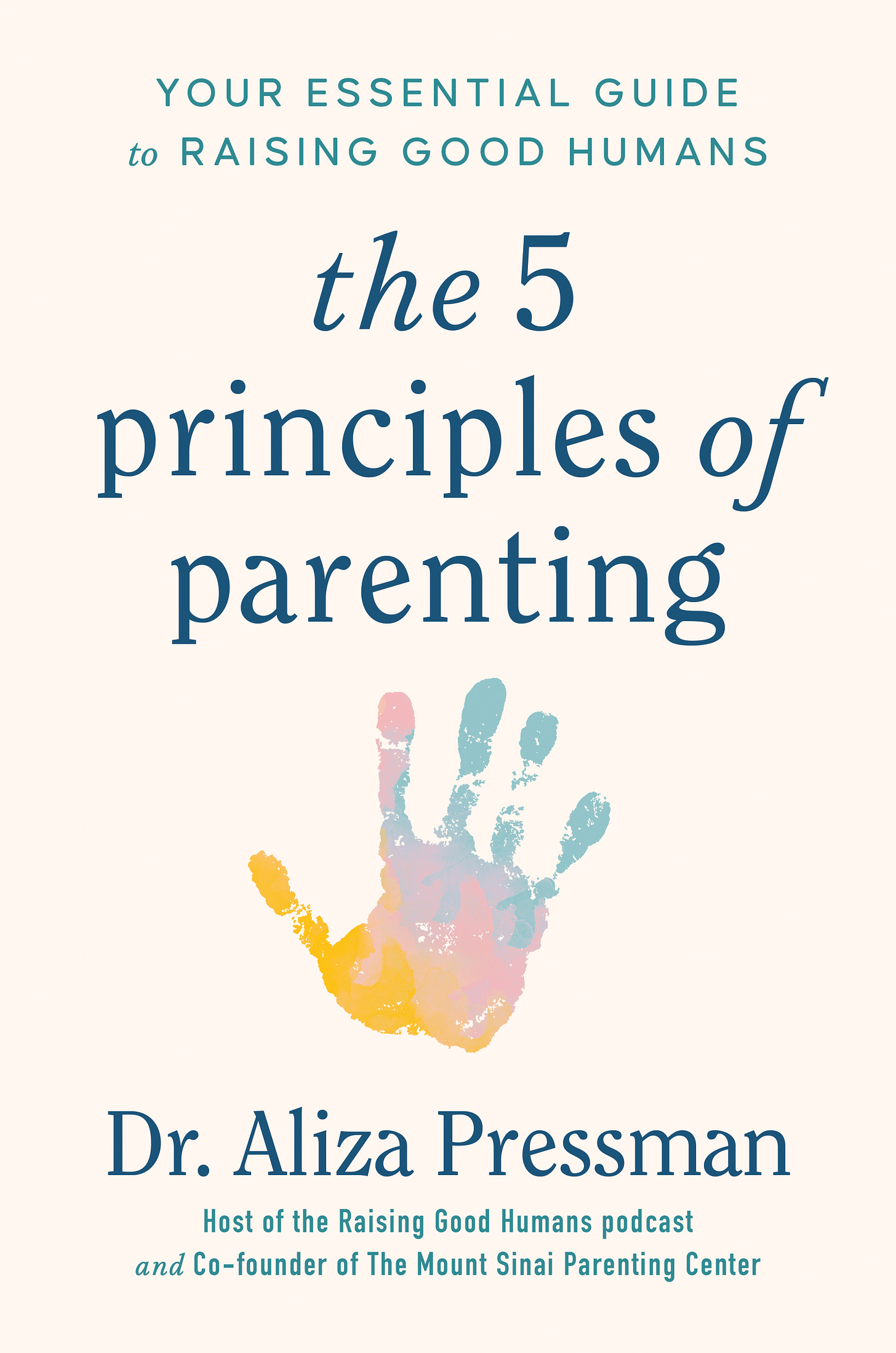Thanks for reading Raising Good Humans on Substack! My first book, The Five Principles of Parenting: Your Essential Guide to Raising Good Humans is now available for purchase here.

In this week's episode with friend and colleague Clarie Lerner, author of Why is My Child in Charge?, we're diving deep into a topic that might sound counterintuitive at first: why setting limits for your child is actually loving. So often, I meet with parents who think that setting limits is about punishments, about harsh parenting, about denying something their kids want and love. We have become afraid to set limits at times - even when it results in more frustrating and difficult challenges at home. Why?
Understanding the mindset shift
Claire talks about how one of the biggest hurdles to setting loving limits is our own mindset. We often fall into the trap of thinking that limits are the opposite of love, that they're harsh or punitive. We feel like our child’s behaviors are designed to manipulate us, or that the risk of failure is harmful for kids. But the truth is, limits are a crucial part of showing your child you care. They provide a sense of security, predictability, and help them develop self-regulation skills. These guardrails are one of my 5 R’s - Rules. Call them what you will, research shows us time and time again that we need them for our children to thrive. To feel safe and secure. To live within the world around us and grow strong skills.
Many parents worry that setting boundaries will stifle their child's creativity and independence. Afterall, we are trying to raise dynamic, interesting, free-thinking humans, right? How can we do that with limits? Well, the research would tell us that limits actually create a safe space for exploration. When your child knows what's expected of them, they can confidently explore within those boundaries. It quiets some of the noise and the chaos of having to always figure out what to do, and can provide the canvas that kids need to find the freedom to express themselves.
Feelings are not the problem
I will keep saying it. “All feelings are welcome, all behaviors are not.” We want our children to feel the full range of feelings, not to shy away from them when things are hard or complicated. But we can also find ways to support our children through their feelings with tools - like limits. Setting limits, in a calm and loving way, can help them learn to cope with those big feelings. They can be angry, frustrated, sad, happy, excited, etc. AND you can hold a limit. They don’t have to agree with it, to be convinced they like it, or to choose to uphold it. By holding firm and validating their feelings, you're teaching them valuable lessons about resilience and emotional regulation.
The barriers
There are many reasons that setting limits is hard for parents.
Consistency. Setting a limit is only one part of the equation. Sticking to it (even under pressure) is where it really matters. Inconsistent responses to limit testing can lead to confusion and frustration, and actually increase challenging behaviors.
Guilt and pushback. When our kids are unhappy about a limit, we feel guilty! We don’t like being called "mean" or watching our children meltdown as we try to stay firm and hold our ground.
Differing parenting styles. If caregivers have differing opinions on how to set and hold limits, it can cause confusion and inconsistency (see bullet 1) for kids. Getting on the same page will prevent “splitting” between caregivers.
Taking behavior personally. It is easy to think your child is trying to manipulate you. You may even believe that they are calculating how to mess with you 23 of the 24 hours in a day. That just isn’t true. This behavior is strategic - and reinforced by your responses.
Fear of failure. If you don’t believe that your child can, and must, fail in order to learn, it is easy to avoid setting any limits that make them uncomfortable. Instead, we want our children to practice failing, to make mistakes, and to experience disappointment and frustration in order to gain important life skills.
Focus on connection, not control
At the heart of it all, setting loving limits is about strengthening your connection with your child. It's about showing them that you care, that you're there for them, and that you're committed to helping them grow into happy, healthy, and responsible adults. It is about creating the environment in which they can thrive, not trying to change who they are. Remember that limits aren’t for them to choose, to love, or even to agree with. They are for you to help set a tone of order and regulation in your home and parenting.
A quick reminder to buy my first book, The Five Principles of Parenting, and write a review from wherever you order. Reviews really help to get the book noticed, and to spread the word. Please especially rate and review any books purchased on Amazon (it shockingly really, really matters!). Also, when you receive the book, snap a quick pic with it and post on social media. Share one thing you love about it and help me to get more copies into the hands of parents in your community. Tell a friend about the book, or about something you found helpful in the book. Parents look to each other for advice, and I’d love to be a part of the support you pass on to your loved ones.





